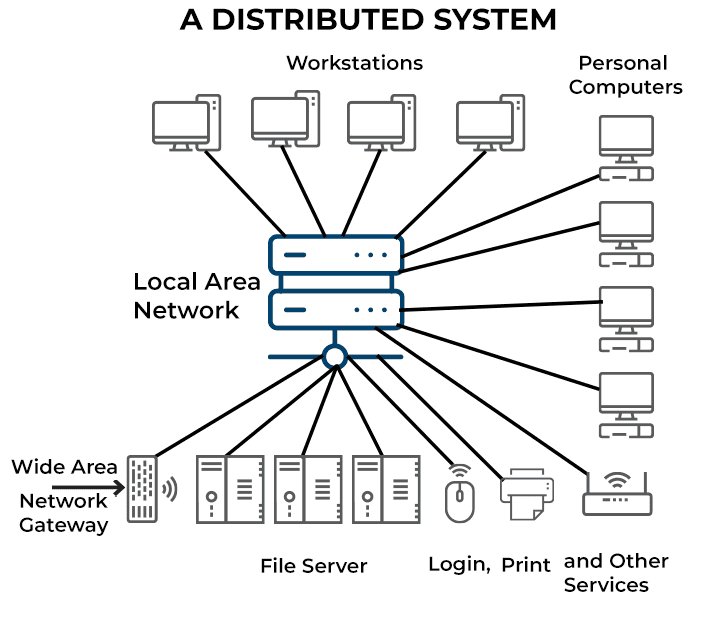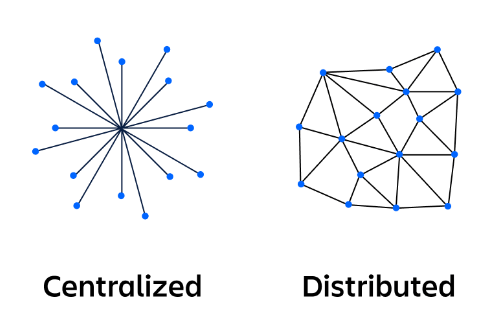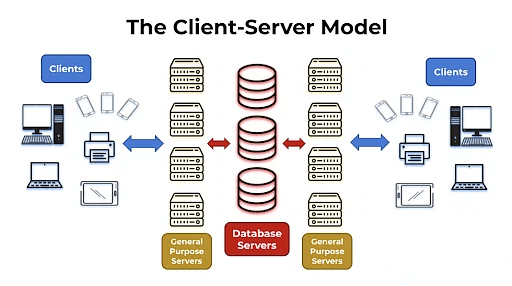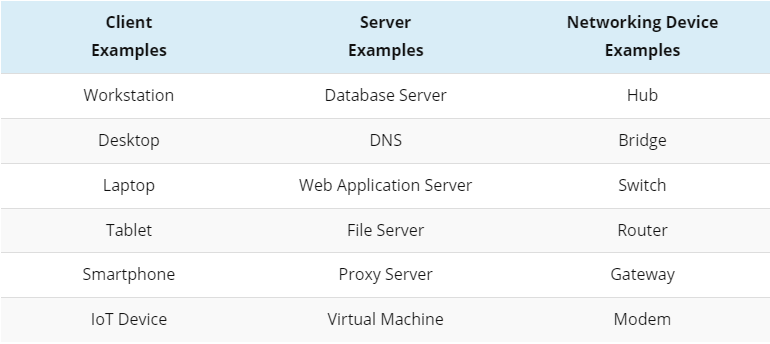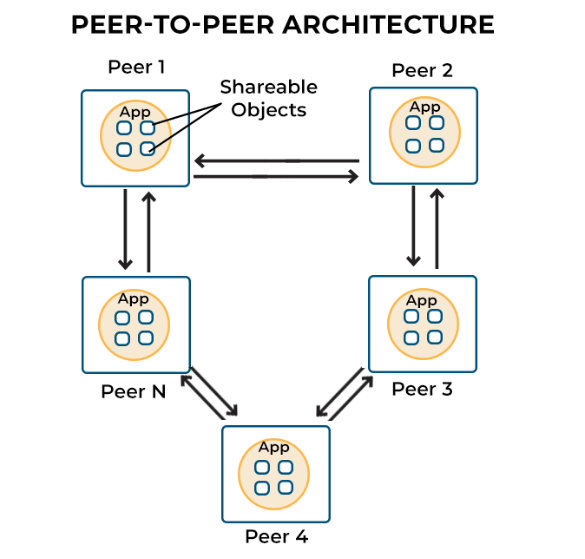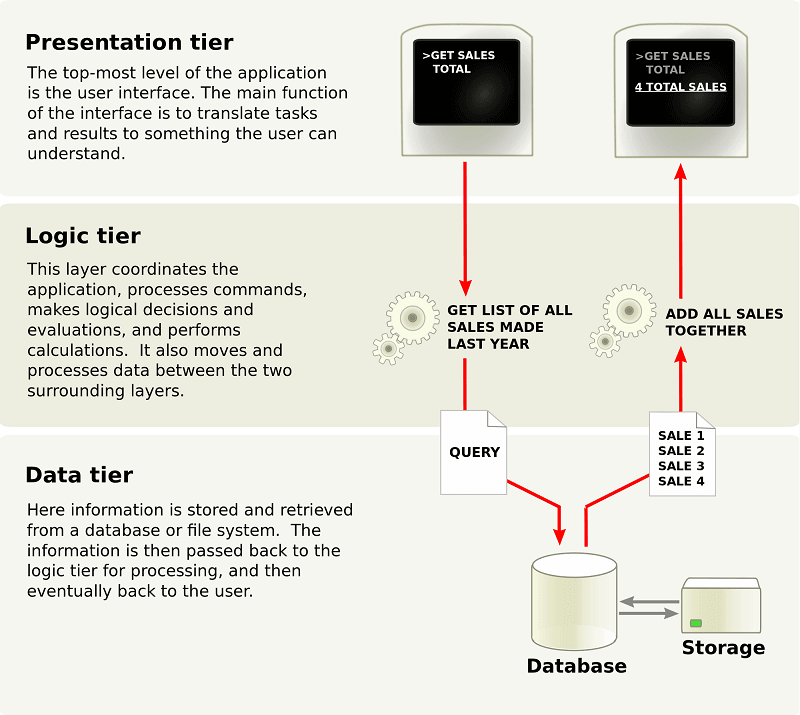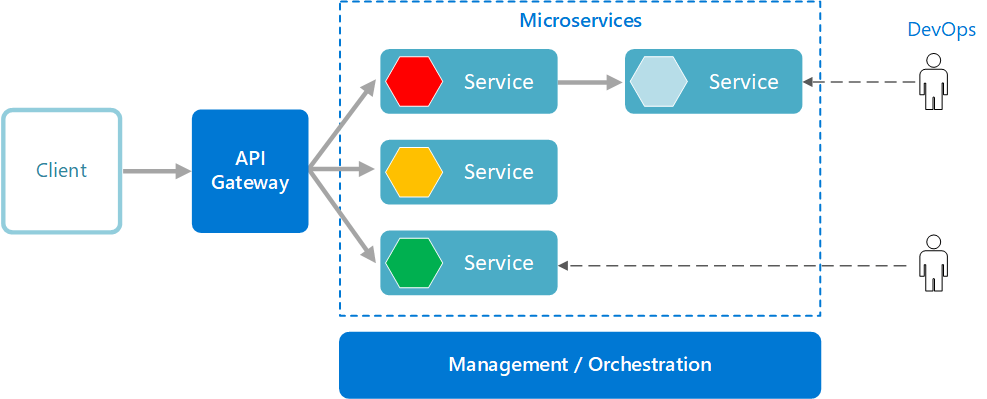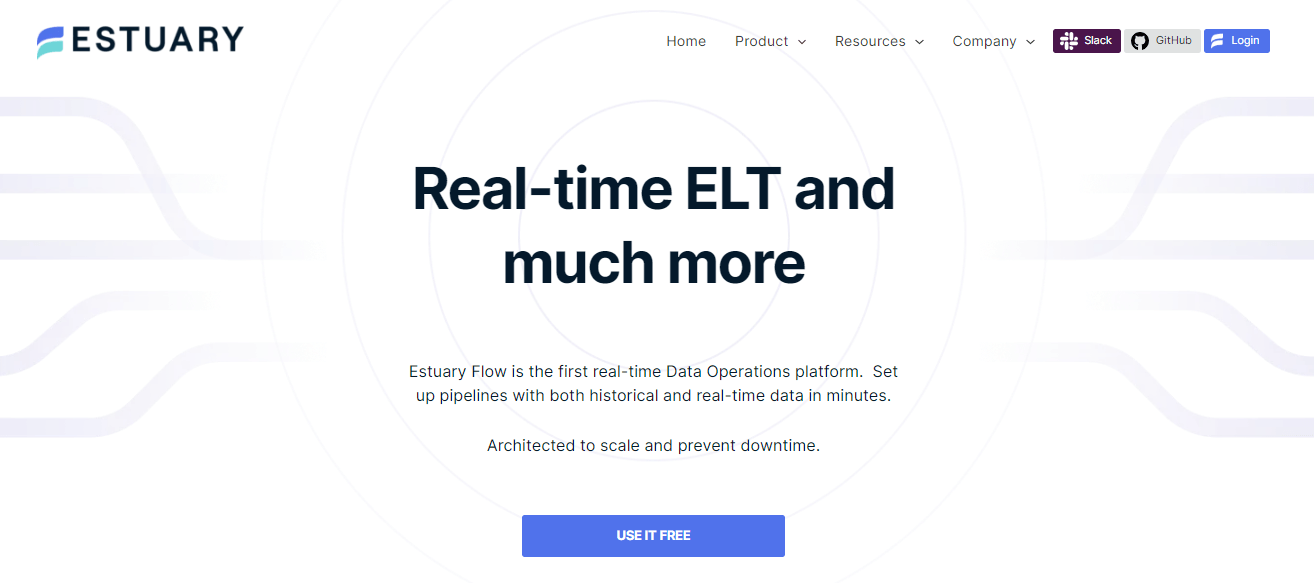
Distributed architectures have become an integral part of technological infrastructures. With the proliferation of cloud computing, big data, and highly available systems, traditional monolithic architectures have given way to more distributed, scalable, and resilient designs.
These architectures allow applications to deliver high-performance, reliable services across vast geographical spans, dealing with vast amounts of data and numerous concurrent users.
There are several types of distributed architectures, each serving unique needs and overcoming different challenges. Having a clear understanding of these architectures is key to designing robust and scalable systems. It also helps leverage the strengths of different architectural approaches for innovative solutions that optimize performance, reliability, and user experience.
In this article, we’ll look into the details of distributed architectures, their components, and how to design and implement them effectively in your projects.. We’ll also dissect the 4 major types for their unique characteristics and functionalities.
What Is A Distributed System?
A distributed system is a collection of computer programs spread across multiple computational nodes. Each node is a separate physical device or software process but works towards a shared objective. This setup is also known as distributed computing systems or distributed databases.
The main goal of a distributed database system is to avoid bottlenecks and eliminate central points of failure by allowing the nodes to communicate and coordinate through a shared network.
The following are the characteristics of the distributed systems:
- Error detection: Failures or errors within a distributed system are readily identified and detected.
- Simultaneous processing: Multiple machines in a distributed system can perform the same function or task simultaneously.
- Scalability: The computing and processing capacity of a distributed system can be expanded by adding more machines as required.
- Resource sharing: In a distributed computing system, resources like hardware, software, or data can be shared among multiple nodes.
- Transparency: Each node within the system can access and communicate with other nodes without being aware of the underlying complexities or differences in their implementation.
Centralized System vs. Distributed System
In a centralized system, a single computer in one location performs all computations. Every node accesses a central node which causes congestion and slower performance. On the other hand, distributed systems consist of multiple nodes that work collaboratively.
In these systems, the state is spread across different nodes which prevents a single point of failure. This dispersion of computation and storage resources causes improved performance and resilience.
Benefits Of Distributed Systems
- Scalability: Distributed database systems offer improved scalability as they can add more nodes to easily accommodate the increase in workload.
- Improved reliability: It eliminates central points of failure and bottlenecks. The redundancy of nodes ensures that even if one node fails, others can take over its tasks.
- Enhanced performance: These systems can easily scale horizontally by adding more nodes or vertically by increasing a node's capacity. This scalability results in enhanced performance and optimum output.
Drawbacks & Risks Of Distributed Systems
- Requirement for specialized tools: Management of multiple repositories in a distributed system requires the use of specialized tools.
- Development sprawl and complexity: As the system's complexity grows, organizing, managing, and improving a distributed system can become challenging.
- Security risks: A distributed system is more vulnerable to cyber attacks, as data processing is distributed across multiple nodes that communicate with each other.
What Are Distributed Architectures? Understanding Their Components & Types
Distributed architecture refers to a model where software components that reside on networked computers communicate and coordinate their actions to achieve a common goal. In this approach, computation tasks are divided among several machines rather than relying on a central server. This spreading out of the workload by distributed architectures enhances a system's performance, scalability, and resilience.
A key advantage of distributed architecture is its fault tolerance. If one node in the system fails, others can take over its tasks, ensuring uninterrupted service. Moreover, this architecture can easily be scaled up by adding more machines which makes it an excellent choice for large, complex applications.
6 Key Components Of Distributed Architectures
Distributed systems are complex and can vary greatly depending on their specific use case and architecture. However, the following core components are present in most distributed systems:
Nodes
These are the individual computers or servers that make up the distributed system. Each node runs its own instances of the applications and services that make up the system.
Network
This is the communication infrastructure that connects all nodes. The network enables data and information to be exchanged between nodes.
Middleware
This software layer provides a programming model for developers and masks the heterogeneity of the underlying network, hardware, and operating systems. It provides useful abstractions and services which simplify the process of creating complex distributed systems.
Shared Data/Database
This is where the system stores and retrieves data. Depending on the specific design of the distributed system, the data could be distributed across multiple nodes, replicated, or partitioned.
Distributed Algorithms
These are the rules and procedures nodes follow to communicate and coordinate with each other. They enable nodes to work together, even when some nodes fail or network connections are unreliable.
System Management Tools
These tools help manage, monitor, and troubleshoot the distributed system. They provide functionality for load balancing, fault tolerance, system configuration, and more.
4 Types Of Distributed Architectures
Distributed architectures vary in the way they organize nodes, share computational tasks, or handle communication between different parts of the system. They embody the principles of distributed computing that are tailored to specific requirements and constraints.
Let’s have a detailed look into four different types of architecture of distributed systems.
Client-Server Architecture
The client-server architecture is a fundamental model in distributed systems. It breaks down the system into 2 main components: the client and the server.
The client-server model describes how various network devices, known as clients, interact with servers. These clients, which include workstations, laptops, and IoT devices, create requests that are completed by servers.
While servers were traditionally physical devices, the current trend is towards deploying virtual servers for diverse workloads. The client sends a request to the server which handles the business logic and state management.
On the other hand, when the server receives and processes the client's request, it sends back a response. These interactions often involve messaging, data collection, and calculations. While the servers need not know about clients, clients should be aware of the servers' identities.
A truly distributed client-server system includes multiple server nodes to distribute client connections which prevents the structure from degrading into a centralized one. These systems are prevalent in modern enterprises and data centers, serving various processes such as email, internet connections, application hosting, and more.
Components Of A Client-Server Model
The client-server architectures are constructed around three fundamental components. Let‘s examine each one by one.
Workstations
Workstations, or clients, are user systems that run various operating systems. As network clients can be an array of device and OS types, administrators are tasked with ensuring compatibility among them. With the increasing heterogeneity of devices, the challenge of maintaining interoperability has become more significant.
Servers
Servers are high-performance devices that can be physical, virtual, or cloud-based. They perform various functions and have fast processing, large storage, and robust memory. They manage multiple requests from various workstations simultaneously. Examples include mail servers, database servers, file servers, and domain controllers.
Networking Devices
Networking devices provide the medium for workstations and servers to connect. Different types of devices are used for specific purposes:
- Bridges are used for network segmentation.
- Repeaters transfer data from one device to another.
- Hubs are used to connect multiple workstations to a server.
Peer-To-Peer (P2P) Architecture
The peer-to-peer (P2P) architecture is a unique type of distributed system that operates without centralized control. In this architecture, any node, also referred to as a peer, can function as either a client or a server. When a node requests a service, it acts as a client and when it offers a service, it's considered a server.
P2P networks can be broadly categorized into 3 types:
- Structured P2P: Nodes adhere to a predefined distributed data structure.
- Unstructured P2P: Networks feature nodes that randomly select their neighbors.
- Hybrid P2P: Systems combine elements of both, with certain nodes assigned unique, organized functions.
An important feature of the P2P system is its inherent redundancy. Each node carries the full application instance, containing both the presentation and data processing layers. When a new peer is introduced to the system, it discovers and connects to other peers for synchronizing its local state with the wider system. This redundancy ensures the system's resilience with the failure of a single node having minimal impact on the overall network.
A key advantage of P2P networks is the increase in system capacity as more nodes join the network. This yields shared resources such as bandwidth, storage, and processing power. Compared to typical client-server networks where increased demands cause fewer available resources per client, P2P networks become more robust and resilient with each additional node.
Components Of Peer-to-Peer Architecture
The following are the main components of a P2P architecture:
Peers Or Nodes
The foundation of any Peer-to-Peer (P2P) network is the peers or nodes. These are individual computers that can both request and provide services. This dual role of each participant sets P2P apart from traditional client-server models.
Network Infrastructure
This element refers to the connection medium that links all nodes in the system. It can range from a local communication network to the expansive internet. The network allows the nodes to communicate and enables the sharing of resources.
Distributed Data
In a P2P system, data is not stored in a central location but is spread across the network. Each peer holds a part of the overall data. This distributed nature of data is one of the key aspects that enhances the resilience and efficiency of P2P systems.
Directory Services
While P2P networks fundamentally lack central control, some incorporate a directory service. This service helps locate resources in the network which enhances its overall efficiency.
Communication Protocols
Protocols form the rules of interaction within the network. They allow peers to discover other nodes, ask for services, offer services, and synchronize their data. These protocols are vital for smooth operations and communications in the P2P network.
Multi-Tier (n-tier) Architecture
Multi-tier architecture, also known as n-tier architecture, was first created by enterprise web services. It divides an application's functions into physically separated tiers. This separation allows developers to alter or add a specific layer without modifying the entire application, enhancing its flexibility and reusability.
Multi-tier architecture offers better performance than a thin-client approach and is simpler to manage than a thick-client approach. It supports reusability and scalability so you can add additional servers as demand increases. It also reduces network traffic and offers multi-threading support for better flexibility.
Despite its advantages, multi-tier architecture lacks comprehensive testing tools which poses challenges in terms of testability. Given its distributed nature, it also needs more critical server reliability and availability.
Components Of Multi-Tier (n-tier) Architecture
The components of a Multi-tier Architecture, often called three-tier architecture, are typically broken down into 3 main components/tiers:
Presentation Tier
This is the front-end layer and the interface of the architecture that users interact with directly. Its main responsibility is to handle user interaction and display data. Components here include user interfaces, templates, and other components focused on user engagement and interaction.
Logic Tier
This tier is also known as the application tier or mid/business tier. It handles the functionality of the system and processes commands, makes logical decisions, and performs calculations. Components in this tier include the application server, business workflows, and business rules.
Data Tier
This is the back-end layer of the architecture where data is stored and retrieved. It includes the data persistence mechanisms like database servers and file shares and also provides APIs to the application tier for managing the stored data. Components in this tier involve databases, database servers, and other data management technologies.
Microservices Architecture
Microservices Architecture is about developing applications as a collection of small, independent services. Each microservice has a specific task or responsibility and they communicate with others via well-defined APIs.
Microservices are designed to operate autonomously with each component developed, deployed, scaled, and operated without affecting others. Interestingly, they don't share code or implementation. If a service becomes complex over time, it can be further broken down into smaller services.
Microservices Architecture provides several benefits. It:
- Encourages agility.
- Boosts productivity.
- Shortens development cycles.
- Helps precisely determine infrastructure needs and costs.
- Promotes small, independent teams that take ownership of their services.
- Allows for flexible scaling with each service independently scaled based on its demand.
Microservices architecture allows for faster deployment and empowers continuous integration and delivery, enabling easy experimentation with new ideas and minimizing the cost of failure. The architecture also provides technological freedom since teams can choose the best tools to solve their problems. Moreover, code becomes reusable and applications gain increased resilience as failure in one service doesn't crash the entire application.
Components Of Microservices Architecture
Microservices architecture is composed of several key components that work together to create a cohesive, scalable, and efficient system.
Individual Microservices
Individual Microservices form the backbone of this architecture. Each microservice focuses on a specific function and operates independently from the others. This independent operation enables each microservice to be developed, updated, or scaled without disrupting the entire system.
Database Per Service
In the Microservices architecture, each microservice has its dedicated database. This ensures loose coupling and data consistency within each service and also contributes to the overall robustness and resilience of the system.
API Gateway
The API Gateway is the single point of entry for all client requests. It handles request routing, composition, and protocol translation, directing these requests to the corresponding microservice.
Service Registry & Configuration Server
The Service registry is a database for all active microservice instances and facilitates inter-service communication. On the other hand, the configuration server maintains and supplies configuration properties across various environments and services.
Circuit Breaker & Message Queue
The circuit breaker detects system failures and diverts requests to fallback methods to prevent widespread outages. The message queue enables asynchronous communication between microservices, promoting loose coupling and enhancing overall system efficiency.
Load Balancer
The load balancer plays a vital role in managing network or application traffic. For maintaining optimal system performance, it evenly distributes the traffic across servers and ensures that no single server is overburdened.
Optimizing Distributed Architecture With Estuary Flow
In the ever-evolving landscape of distributed system architectures, the adoption of advanced tools and platforms has become pivotal. These tools enhance system performance, enable seamless data movement, and promote efficient real-time processing. One such state-of-the-art tool that stands out is Estuary Flow.
Flow is a cutting-edge platform designed to manage streaming data pipelines while scaling with your data. This allows you to connect to various data sources without worrying about the complexity of distributed systems and data movement.
In a distributed environment where data processing and visibility are often critical, Estuary's real-time transformations and materializations offer significant advantages. Its extensibility allows for the easy addition of connectors via an open protocol, fostering effortless integration with various components of the system.
Flow is built to survive any failure and provides exactly-once semantics which ensures reliable and consistent data processing across the distributed architecture. It uses low-impact Change Data Capture (CDC) techniques which effectively minimize the load on individual components.
Scalability is an important aspect in distributed systems and Flow, being a distributed system itself, handles varying data volumes efficiently. It also provides live reporting and monitoring capabilities for real-time insights into data flows, which is vital for troubleshooting and optimization in distributed systems.
Conclusion
Distributed architectures empower organizations to break free from traditional limitations and pave the way for limitless innovation and technological advancements.
Ignoring the potential of distributed architectures means missing out on the opportunity to harness their immense power. However, distributed architectures also introduce complexity in terms of deployment, management, monitoring, and troubleshooting. For this, you need a modern solution, such as Estuary Flow.
Estuary Flow is a distributed system that connects to your databases, SaaS tools, and other data sources. You don't have to worry about the complexity of managing a distributed system, as Flow handles it for you. The platform also gives you real-time visibility and insights into your data pipelines, helping you to detect and resolve issues, optimize performance, and make data-driven decisions.
Embracing Estuary Flow as the backbone of distributed architectures means embracing efficiency, scalability, and future-proofing. Sign up for free and start harnessing the power of this robust platform. For more information, don't hesitate to contact our team.

Author
Popular Articles





